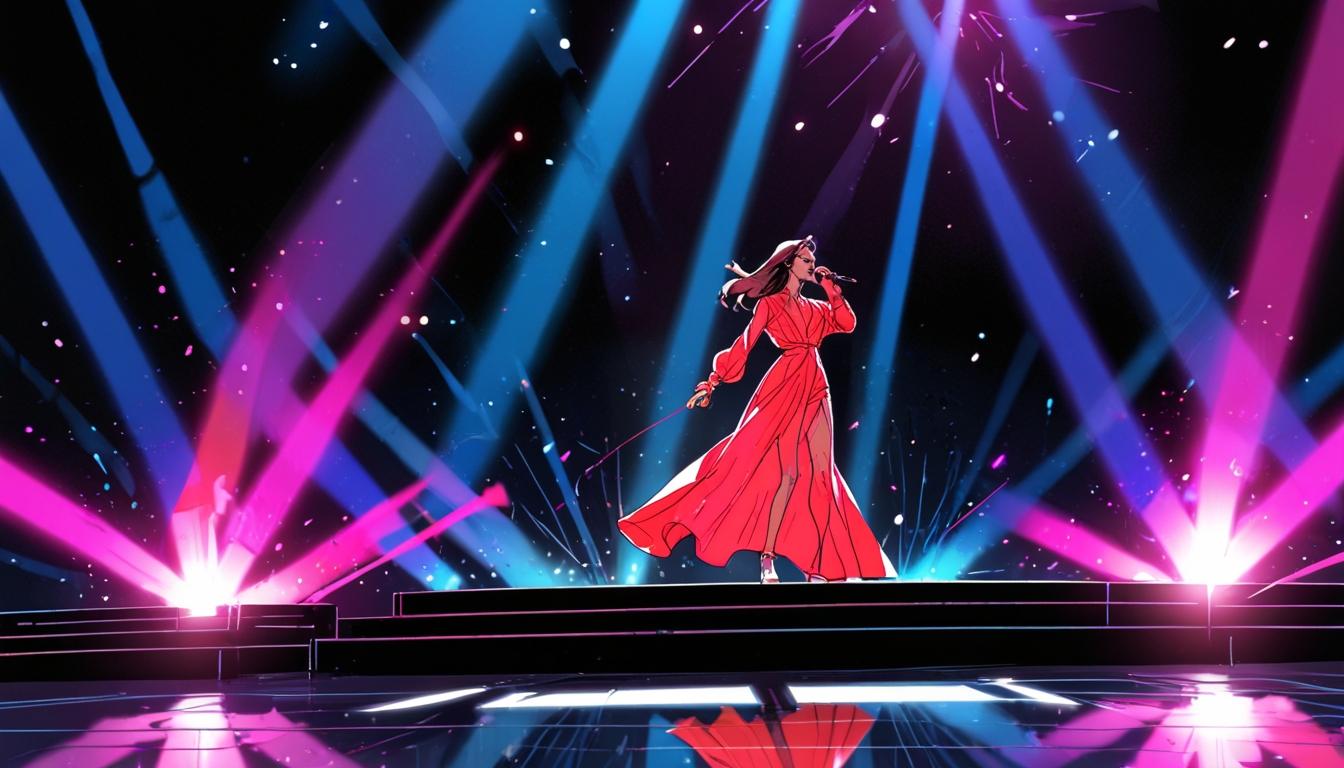As Eurovision’s viewership soars past 160 million, musical experts reveal how the contest’s winners increasingly favour minor keys and emotional depth—while the UK’s Remember Monday dares to challenge the status quo with a major-key anthem.
The Eurovision Song Contest continues to captivate audiences worldwide, drawing approximately 163 million viewers last year. With such a vast viewership, the diversity of opinions on what constitutes a winning entry is expansive. Essentially, the question remains: should a contestant pursue a heartfelt ballad that tugs at the emotional strings of Europe, or should they opt for an exuberant spectacle brimming with flamboyant performances and outlandish stage designs? The answer may lie in understanding the musical intricacies and cultural nuances that make Eurovision not only a competition but also a celebration of artistry.
Musical analysis reveals a fascinating dichotomy within Eurovision entries. Joe Bennett, a forensic musicologist at Boston’s Berklee College of Music, has scrutinised numerous finalists, identifying two prevalent musical styles: the high-energy “Euro-banger” and the emotive slow-burn ballad. The Euro-banger, typically featuring upbeat tempos exceeding 120 BPM and a heavy reliance on synths and kick drums, has been epitomised by Sweden’s past winners such as Loreen’s “Euphoria” and Måns Zelmerlöw’s “Heroes.” Conversely, the ballads, which often maintain a leisurely tempo around 70 BPM, include celebrated entries like Portugal’s “Amar Pelos Dois” and the Netherlands’ “Arcade.”
Bennett indicates that while Eurovision songs often evoke themes of love, unity, and self-assertion, certain lyrical motifs—particularly those emphasising empowerment—tend to resonate deeply with audiences. This connection is exemplified in the success of Conchita Wurst’s “Rise Like a Phoenix,” a performance that transcended typical contest expectations, combining a powerful message with a unique presentation. Vocal coach Carrie Grant, who made her mark in Eurovision history, highlights the importance of simplicity in staging. She emphasises that complexities can muddle a performance, saying, “There is nothing worse than having an artist whose stage has lots of money but their performance doesn’t warrant it.”
Recent trends further illustrate the evolution of what garners success in Eurovision. Increasingly, entries in minor keys have dominated, with 85% of finalists in 2023 using this musical mode. This shift underscores a growing perception that minor keys convey deeper emotional resonance, with only a handful of major-key songs achieving victory since the early 2000s. Elizabeth Hellmuth Margulis, a music cognition researcher at Princeton, echoes this sentiment, highlighting how specific musical elements resonate with audience expectations and cultural context.
For the upcoming contest, the UK act Remember Monday is attempting to break the mould by presenting a major-key song, “What the Hell Just Happened,” which aims to stand out in an ocean of minor-key entries. Written collaboratively during a songwriting camp, the track embraces a fresh perspective on composition. According to BBC music correspondent Mark Savage, it weaves together unexpected key changes and tempo shifts, embodying the songwriter’s quest to differentiate within a fiercely competitive landscape.
A noteworthy factor in the contest’s enduring charm lies in the element of surprise, which Margulis identifies as crucial for a song’s memorability. Historically, notable Eurovision performances have combined catchy melodies with unexpected twists, as seen in Bucks Fizz’s infamous 1981 performance. The unforgettable costume reveal complemented the song’s sonic shifts, demonstrating that both visual and auditory surprises capture viewers’ imaginations.
The essence of Eurovision rests upon its ability to merge diverse artistic expressions while appealing to a wide spectrum of tastes. Whether through powerful ballads or engaging pop anthems, the goal remains the same: to create an unforgettable experience that resonates across cultural boundaries. As the contest approaches, anticipation builds to see which entry will emerge victorious and which strategies will take centre stage in 2023.
Reference Map
- Paragraphs 1, 2, 3, 4, 5, 6, 7, 8.
Source: Noah Wire Services
- https://en.apa.az/show-business/how-to-win-eurovision-according-to-the-experts-467292 – Please view link – unable to able to access data
Noah Fact Check Pro
The draft above was created using the information available at the time the story first
emerged. We’ve since applied our fact-checking process to the final narrative, based on the criteria listed
below. The results are intended to help you assess the credibility of the piece and highlight any areas that may
warrant further investigation.
Freshness check
Score:
6
Notes:
The narrative contains specific references to events and trends from past Eurovision contests, including details about recent entries and music trends from 2023. However, it discusses strategies relevant to the upcoming contest without specifying if it is the most recent one, which may indicate it is not entirely current.
Quotes check
Score:
8
Notes:
The quote from Carrie Grant adds originality, but with no clear online reference to verify, it could be an original comment or a first-time publication, which increases its score. The lack of specific dates or original sources for quotes may be due to the nature of expert opinions rather than direct statements from previous publications.
Source reliability
Score:
5
Notes:
The narrative originates from APA.AZ, which is not a widely recognised source for fact-checking or Eurovision analysis. While it presents insights from experts, there is a lack of specific editorial credentials or fact-checking standards mentioned.
Plausability check
Score:
9
Notes:
The claims about Eurovision strategies and musical trends are plausible, aligning with common observations about what succeeds in the contest. The use of specific musical examples and expert opinions enhances credibility.
Overall assessment
Verdict (FAIL, OPEN, PASS): OPEN
Confidence (LOW, MEDIUM, HIGH): MEDIUM
Summary:
The narrative provides plausible insights into Eurovision strategies with clear expert opinions, but its freshness is somewhat compromised by not clearly referencing the most current contest. The source reliability is moderate due to lack of familiarity with the publication. Overall, the information seems credible but warrants further verification of its currency.













